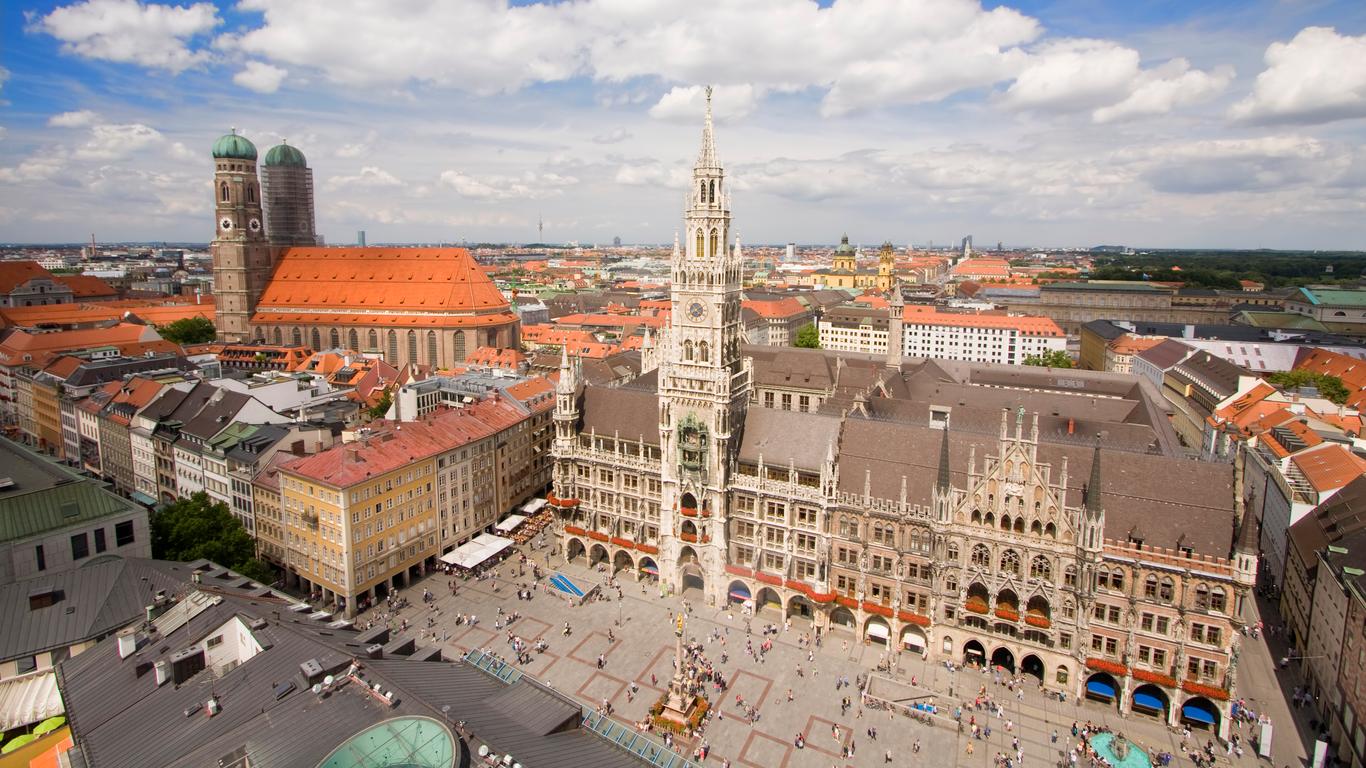For iconic German history, there is simply no beating Marienplatz. Translating to Mary’s Square in English, this has been the main square of Munich since 1158.
Marienplatz, named for the central Mariensaule column and its statue of the Virgin Mary, is bordered by both the “Altes Rathaus”, or Old City Hall and the “Neues Rathaus”, or New City Hall. Of course, in Germany, new means within the last 200 years. These facades draw many a visitor to Munich’s most famous square, but perhaps both pale in comparison to the famed Glockenspiel. Added to Neues Rathaus in 1908, the charming and intricate clock chimes daily with a 12 to 15-minute long song providing the score to traditional 16th century German tales.
The area surrounding Marienplatz, and reaching to Karlsplatz, is largely pedestrianised. A major hub for both the S-Bahn and the U-Bahn is situated beneath the square, with commuter trains all stopping here.
While the square itself dates to the 12th century, its namesake Marian column was only built in 1638. It celebrates the end of the Thirty Years’ War and the subsequent end of Munich’s Swedish occupation. Figures at each corner of the column’s base fight a different beast, representing the city’s ability to overcome adversity.





